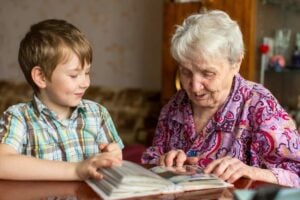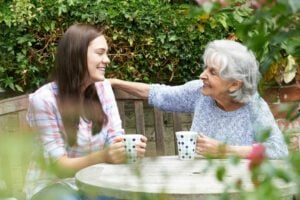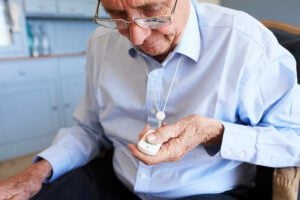Exercises and tips to stay Healthy
Tags
Elderly Mobility and Independence
While more people are living longer and healthier lives, many still experience problems when moving about in later life. This may be due to disability, illness, or chronic pain and it can make even gentle exercise seem out of the question. However, if an older person is less mobile, there are ways to incorporate physical activity into the weekly routine, which, in turn, will have positive effects on their general well-being. In many elderly care establishments, regular activity or exercise sessions are an essential part of the week.
Activities, rather than exercise
Thinking about embarking on an exercise routine can be overwhelming to some elderly people with reduced mobility. It may be better to begin by reframing it as simply ‘moving the body‘.
One simple way to remain active is by keeping up with tasks around the home and garden. This could mean moving a little more around the home, or perhaps engage in some activities such as dusting easy to reach areas, or re-organising a cluttered drawer. Many elderly people will want to do this anyway, as a way of maintaining a sense of independent living.
If you live with or care for an older person in their own home, you could also try encouraging them to help with cooking the evening meal – helping to bring foods from a cupboard or pantry, or mixing ingredients together can introduce movement into their routine.
Swimming
Swimming is a a low-impact sport, meaning there’s very little pressure placed on the joints. The buoyancy of the water counteracts gravity, which is why it feels like you are floating, and makes it a good option for people who need gentle exercises.
It can offer many health benefits too. According to Warwick University swimming in later life can –
- help maintain and nurture bone and muscle strength
- help to physically tire the body, aiding better sleep
- help mental health, by relaxing the body and mind
Swimming in a warm swimming pool can be an enjoyable social occasion, and may help to ease stiffness for those living with arthritis. Because the water provides support, it can make movement easier and allows the muscles to work without bearing weight.
For those living with more severe mobility issues, swimming may still be a good option for exercise. Some pools have special hoists that can lower people into the water safely, and lift them out at the end of the session. To find a pool near you with these facilities, try Swimming.org’s Poolfinder and select ‘pool hoist’ from the accessibility options.
Some therapy pools and leisure centres also have adapted changing areas for those with special needs, as well as swimming groups and dedicated over senior sessions, such as Everyone Active.
If the person you support is keen to try swimming but you’re unsure how to find the right facilities, speaking to a GP, nurse, or occupational therapist is often a good place to start.
Improving balance
The less mobile an elderly person is, the more at risk of falls they are. Not only does inactivity weaken the muscles but it can affect balance and coordination too. This is because maintaining balance requires practice – think of it in terms of riding a bicycle. If you ride a bicycle everyday you’ll soon become confident and steady, and riding it will become second nature. However, if you were to stop for a few years and then try to ride, you’ll likely be wobbly to begin with because you’re out of practice.
While riding a bicycle may be a bit too risky for an older person with limited mobility, there are many forms of light exercises that they can do that can improve both balance and coordination.
Tai Chi, for example, involves gentle stretching and breathing. If they’re able, gentle dancing to their favourite music at home can be an enjoyable way of getting some exercise, improving balance and boosting their mood too. People who need dementia care are often very responsive to music, especially tunes they remember from their youth.
Gentle yoga exercises can also be suitable for people who are less mobile, and some can be carried out in a seated position at home. Teaching DVDs or instructional videos on YouTube, such as this one from St George’s University Hospital are a great place to start.
Some other useful resources include –
- Local Age UK centres offer a range of classes in things like Tai Chi, like this one in Somerset.
- People Dancing is a directory of later life classes and activities.
Seated exercises
Seated exercises can be done from the comfort of an older person’s home, or at sessions organised by local community groups or Age UK centres. Some NIA (non-impact aerobics) sessions are suitable for people who need to remain seated or who are only able to stand for a limited period, so contact your local group to enquire if they would be appropriate to the needs of the older person you’re caring for.
Seated exercises can help to strengthen many different body areas, including the back, chest and abdomen, as well as the arms and legs.
Age UK also offers some beginner’s exercises on their website, these include gentle stretches, such as–
- While sitting or lying, bring your toes towards your shin and then point them toward the floor. Repeat for both feet.
- Sitting on a chair, pull your toes up, tighten your thigh muscle and straighten your knee. Hold for about 5 seconds, if you can, and then slowly relax your leg. Repeat for both legs.
Equipment
It can be worthwhile investing in some small, low-cost pieces of exercise equipment for exercising at home. Using wrist weights or resistance bands can help the muscles to work a little harder when doing chair-based exercises. An inflatable ball can be useful for many different movements including helping to keep the arms straight while stretching and holding between the feet if your loved one lies on the floor and tries to lift their legs.
Diet
It is crucial that older people eat healthily to remain as fit as they can. People who do not move around very much often have smaller appetites and may not be able to take in sufficient vitamins, minerals and fuel. If they have a reduced appetite, high protein snacks such as nuts, low fat cheese, or canned fish, as well as light meals like grilled chicken or bean soup may be beneficial.
Fluid is also very important. Older people usually have a lower percentage of water in their bodies, and a weaker thirst sensation which puts them as greater risk of dehydration. Ensuring you’re drinking enough water is particularly important after increasing the amount of movement you do, because you’ll lose more fluid. People who become dehydrated can experience pains and cramps, as well as feeling tired after even mild exercise.
There are many steps you can take to stay as active and mobile as possible, and the key is to tailor any interventions to your own interests and ability. If you are unsure about what might be appropriate, always consult a doctor or physical therapist about suitable exercise.
This article is for informational purposes only. Always consult a medical professional before starting any new exercise programme, to ensure it’s right for your abilities.
Read more care guides

How to prepare for a live-in caregiver
Care at home: how to prepare the home for a live-in caregiver A live-in carer can make a massive difference to your loved one’s quality

6 tips for finding the right live-in carer
Finding the right live-in carer is a significant and deeply personal decision, impacting your loved one and the entire family. You’re seeking someone trustworthy, compassionate,

The cost of care – everything you need to know
The true cost of care – everything you need to know Discover the true cost of care and explore your funding options with our care

Understanding autism in older adults
While Autism is usually diagnosed in childhood, an increasing number of older adults are being formally diagnosed in later life. Masking autism symptoms can result

A guide to speaking with a loved one about home care
Why do older adults resist care? A guide to speaking with a loved one about home care Bringing up the topic of care at home

How to choose the right personal alarm for seniors: A comprehensive guide
Personal alarms for elderly Discover how personal alarms work, who they’re best suited to, and how they provide greater peace of mind to older people